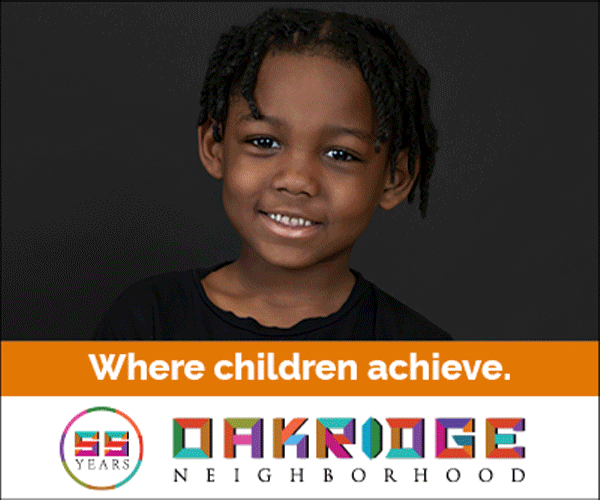Stories by Christine Riccelli
Photos by Ben Easter
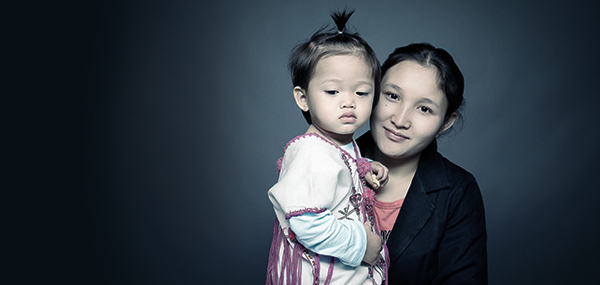
For nearly four decades, Simon Bucumi and his wife, Marisetina Manirakiza, subsisted in refugee camps in the Democratic Republic of Congo and Tanzania, surviving on the hope that one day they could provide a decent home for their eight children. Some 5,000 miles away in Burma, Say Paw escaped to Thailand after the military hunted down and murdered members of her Karen tribe. And in Somalia, Fatuma Aynab left her family and made her way to Kenya by herself, despite a condition that requires her to use crutches to walk—and the fact that she was only 13 years old.
These and other refugees featured in the portraits and stories on the following pages all arrived in Des Moines in the past five years after being driven from their homelands, surviving appalling conditions in refugee camps, and experiencing the kind of horror and heartache that few, if any, of us can fathom.
And yet they’re adapting in ways that astound. For example, Aynab, now 26, earned an associate degree from Des Moines Area Community College, will receive a bachelor’s degree from Grand View University next spring, works full time as a service provider for Optimae LifeServices Inc. and financially supports her family in Somalia. “I have no doubts, no fears,” she says with conviction. “I believe nothing will stop me.”
Certainly, the challenges of refugee resettlement are many, but what’s often lost in that narrative of need is this: The gifts refugees give Greater Des Moines are greater than those needs. Their resiliency, work ethic, desire to help others and eagerness to contribute to their new home enrich our entire community. Refugees “bring all their assets with them when they come here,” notes Leslie Olson, who teaches English language classes at Lutheran Services of Iowa. “They want to get involved and contribute. They want to step up.”
Meet some of these inspiring individuals below, followed by a story on some of the challenging issues today’s refugees face. To the right are ways you can help. Most of all, though, join in welcoming refugees to our community, who arrive with so little and give so much.
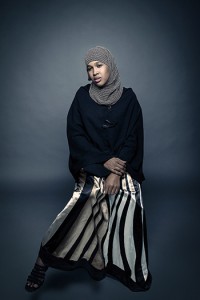 Fatuma Aynab
Fatuma Aynab
Native Country: Somalia
Located in east-central Africa on the Indian Ocean, this country of 10 million people has experienced tragic upheaval for more than two decades. In 1991, civil war broke out, with warring clans competing for resources and power. Over the next two decades, more than 800,000 Somalis became refugees. Then in 2010, a devastating drought—the worst in East Africa in 60 years—wracked the country, and the following year, an official famine, which killed more than 250,000 people, was declared. The country’s first permanent central government since 1991 was formed in 2012.
The Journey
When she was just 13, Aynab left her home in Mogadishu by herself and made her way to Kenya on her own, despite a debilitating medical condition that requires her to use crutches to walk. After living in Kenya for eight years, she was granted refugee status in 2008, coming to Des Moines on her own. The hardest part of the journey, she says, was her first night alone in a Des Moines apartment. “I cried and cried,” she recalls.
Today
Now 26, Aynab doesn’t remember much about her life in Somalia. Her family—she’s the oldest of eight children—has moved to Galkacyo in north-central Somalia. Though she hasn’t seen them since she left the country, “I call them every morning,” she says. She also supports them financially and hopes to be able to return to Somalia to visit them this year. Eventually, she plans to bring them here to live; after that, she says, she would be able to get the surgery she needs for her legs and hips.
Aynab is attending Grand View University, where she’s scheduled to complete a bachelor’s degree in human services, with a minor in psychology, next year. She also works full time at Optimae LifeServices, providing care for clients. Though her family remains some 9,000 miles away, “I have friends here,” she says. Des Moines “is a nice place to start a new life. It is my home now.”
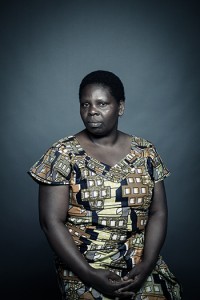
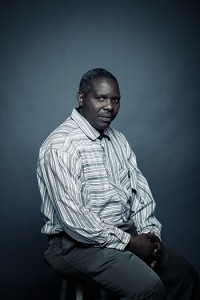 Simon Bucumi
Simon Bucumi
and
Marisetina Manirakiza
Native Country: The Republic of Burundi
A densely populated and landlocked east-central African nation about the size of Maryland, Burundi is home to three major ethnic groups: Hutu, Tutsi and Twa. Although Hutus make up about 85 percent of the population of some 8.7 million, historically Tutsis have been politically and economically dominant. The country won independence from Belgium in 1962, but was plagued by ethnic violence, genocide and civil wars from 1972 until 2005, when a constitution was approved by popular vote. Over the decades, the wars forced more than 1 million people to flee and left the economy shattered; today, the country is one of the world’s poorest.
The Journey
Simon Bucumi was 8 and Marisetina Manirakiza was 4 when their families escaped Burundi in 1972 at the outbreak of war. They lived in refugee camps for 36 years in the Democratic Republic of the Congo and then Tanzania. “There was no food, no money, no drink, no jobs,” says son Arcade. “Our family survived day by day.” Bucumi and Manirakiza’s eight children were born in refugee camps; the oldest daughter, who is married with her own children, is still in a Tanzanian camp. The other children, who today range in age from 5 to 23, came with their parents to Des Moines in 2008.
Today
Bucumi, now 49, and Manirakiza, 44, have only a few fleeting memories of their life in Burundi. They yearn to be reunited with their oldest daughter—“It’s not a good life there,” says son Pacifique—but are glad for the promise Des Moines holds for their children. Arcade, 23, works at Kemin Industries Inc. and is attending Des Moines Area Community College, and 21-year-old Pacifique is studying agronomy at Iowa State University. Daughter Adelphine, 19, graduated from Lincoln High School last spring. Though adjusting to the radically different culture was shocking at first, “compared to the way we were living, (Des Moines) feels like home,” Arcade says. “We can go to sleep and feel safe.”
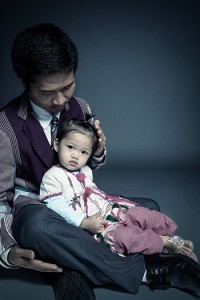 Hser Nay Htoo and Say Paw
Hser Nay Htoo and Say Paw
Native Country: Burma
This Southeast Asian country was controlled by a repressive military junta (who named the country Myanmar) from 1962 to 2011. The rulers committed some of the world’s worst human rights abuses, including slavery, the use of child soldiers, genocide, human trafficking, child labor and systematic rape. There have been some reforms since a nominally civilian government was established in 2011—prominent human rights activist Aung San Suu Kyi was released that same year and Burma’s president, Thein Sein, visited the United States in March 2013—but reports of consistent and widespread human rights violations, including ethnic cleansing, continue. Decades of oppressive rule and economic stagnation have impoverished the country.
The Journey
Both Hser Nay Htoo, 29, and Say Paw, 22, are from the Karen tribe. Htoo was born in a remote mountain village in eastern Burma, with no phone, transportation, electricity or other modern conveniences; the nearest town was a two-day walk. He was forced to leave after the military burned down his village. “They tried to get rid of us all,” he says. “They (killed) everyone; (it) doesn’t matter if you are old or a baby.” He left on his own, fleeing to Thailand, where he lived in a refugee camp for six years. Paw was born in a different village, but also had to escape to Thailand, where she spent 10 years. They moved from Fort Worth, Texas, to Des Moines last September because Paw’s aunt and uncle live here.
Today
The couple, who have a 22-month-old daughter, Esther, miss their family, who still live in Burma and in Thai refugee camps. Htoo can only speak with his mother, who is in Burma, if she travels over the border to Thailand. As they adjust to American life, Htoo and Paw say they like the size of Des Moines and the calmer pace of life here compared with Fort Worth. “It’s a nice place,” Htoo says.
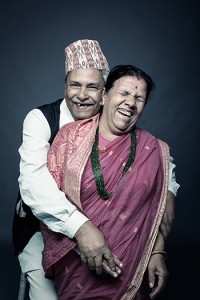 Narad and Goma Bastola
Narad and Goma Bastola
Native Country: Bhutan
With a population of about 750,000, Bhutan is a landlocked nation about the size of Vermont located in South Asia at the eastern end of the Himilayas. Previously an absolute monarchy, Bhutan in 2008 held its first general election and transitioned to a constitutional monarchy. In the 1990s, the government expelled Bhutanese with Nepali heritage—confiscating their homes, possessions and land in the process—in the name of preserving its Tibetan Mahayana Buddhist culture and identity. More than 107,000 Bhutanese, most of whom lived in the southern lowlands, were forced to go to Nepal, but that country doesn’t permit citizenship for the refugees, so they remain stateless. Since 2008, about 50 percent of the Bhutanese refugees have been resettled in other countries, including in 49 U.S. states.
The Journey
Narad and Goma Bastola and their two daughters, Hema and Tika, were evicted from their home and farm in southern Bhutan. “Bhutan didn’t want us there,” Hema, now 29, says. “We had a different religion and culture. They (the government) wanted the country pure.” Forced to leave with just the clothes they were wearing, they survived in a congested camp in Nepal for 18 years. With very little food and no toilets, the family lived in a bamboo hut. “They (the Nepali government) provided us with some rice, but it was not good quality,” Hema said, translating for Narad. “We had to separate the dirt and stones from the rice. Many people died.” Tika eventually got married in the refugee camp and was resettled in Des Moines; the other three joined her in 2009.
Today
Hema is studying nursing at Mercy College of Health Sciences and expects to graduate in 2014. Narad, 67, and Goma, 57, appreciate their new home but are still struggling to learn English, which has slowed their acclimation. Without knowing the language, “I feel deaf,” Narad said, with Hema interpreting. “That’s the main problem.” Despite the difficulties with English and other challenges, Hema says Des Moines offers the family a “much better life. Iowa is safe and clean.”
Diversity Within Diversity
In the mid-1970s, Iowa gained international acclaim for its refugee resettlement efforts when, under the initiation and direction of then-Gov. Robert Ray, the state welcomed Tai Dam, Lao, Cambodian and Hmong refugees fleeing the chaotic aftermath of the Vietnam War. Over the years, thousands of refugees from Southeast Asia came to call Iowa home.
In the nearly four decades since then, the process of resettling refugees has altered dramatically. Iowa no longer has a government agency involved in resettlement; the Iowa Bureau of Refugee Services, part of the Iowa Department of Human Services, offers social services but ended its resettlement program in 2010. That same year, Lutheran Services of Iowa (LSI) stopped resettling refugees because of a lack of funding, refocusing its efforts to providing services for refugees already living here. Catholic Charities and the U.S. Committee on Refugees and Immigrants (USCRI) are the only agencies in Des Moines that offer a resettlement program.
In addition, far less funding and fewer resources are available for resettlement today, resettlement challenges are more complex and the refugee population is more diverse.
“Five years ago, I could not have anticipated what Iowa would look like today,” Mark Grey said at a forum on immigrants and refugees held earlier this year in Des Moines. Grey is director of the Iowa Center for Immigrant Leadership and Integration and a professor of anthropology at the University of Northern Iowa.
Arriving primarily from Burma, Bhutan, Iraq, Sudan, Somalia, Eritrea, Nepal and the Democratic Republic of the Congo (and, it’s expected, soon Syria), many of today’s refugees consist of “micro-populations,” Grey said, resulting in “diversity within diversity.” He calls the trend “micro-plurality,” which “describes the growth in the number of small and linguistically distinct groups in our communities.”
Finding interpreters for all the different languages is a daunting challenge that isn’t always met, local resettlement experts say. For example, more than 120 different languages are spoken in Burma alone. In Des Moines schools, the children of refugees (and other immigrants) speak more than 100 languages.
Also unlike the past, refugees face a lightning-fast adjustment period, and there isn’t a sponsorship program—involving an extensive, organized network of churches and volunteers—in place to help them along. In the 1970s, refugees received six months of cultural training before even entering the United States; now it ranges from four hours to a week, according to John Wilken, director of the Iowa Bureau of Refugee Services. Furthermore, compared with three years of assistance in the 1970s and 1980s, basic services today are provided for only 30 to 90 days once refugees arrive. In that short amount of time, refugees are expected, for example, to learn English, get a job, enroll their children in school, understand the U.S. legal and medical systems, and develop the financial literacy and life skills necessary to succeed in their new home. Transportation is problematic, as their housing often isn’t located near a bus line.
What’s more, refugees often arrive physically and emotionally traumatized, having escaped their homelands after experiencing war, torture, ethnic cleansing, rape and other atrocities and having spent years—sometimes decades—in refugee camps. “We are managing increasingly complex health needs of refugees,” notes Stephanie Hingtgen, manager of Catholic Charities’ refugee resettlement program, a comment echoed by others who work with refugees. In fact, Amy Campos, director of USCRI’s Des Moines field office, says wheelchairs and walkers are one of her agency’s greatest needs (see “How You Can Help,” page 82).
Other difficulties include a lack of child care and transportation for refugees seeking language, life skills and employment training; isolation, especially among the elderly population; and, if they are highly educated or had a high-skill job in their home country, dashed expectations when they find they have limited job opportunities here.
Local organizations and advocates are tailoring programs to tackle some of these challenges and address the changing needs of the refugee population. For example:
- LSI created a senior center “to help with the big and small details of life,” says Nicholas Wuertz, LSI’s director of refugee services. Through the center, older refugees can get assistance with such things as learning English, understanding the transportation system, connecting to local service providers and other resources, and studying for their citizenship test, as well as meeting and socializing with others through events and community outings.
- LSI also has established an urban agriculture program, which so far has helped 140 families connect to community garden plots. Gardening “reconnects many of them with something they’re familiar with that’s a part of their culture,” Wuertz says. “It helps with physical, mental and emotional healing.” About 30 refugees are now selling what they grow at farmers markets. And in 2012, LSI launched a child care business development program, which trains refugee women to run small home-based child care businesses. Overall, LSI serves about 400 refugees a year.
- The Iowa International Center earlier this year started English language classes at the Deer Ridge apartment complex in Des Moines, with child care also provided on site. Judy Conlin, director of the Iowa International Center, says the organization would like to expand the program to about 15 additional housing sites across Polk County that aren’t connected to a bus line.
- Neighbors Helping Neighbors pairs one refugee family with two U.S. families. Vinh Nguyen, who coordinates the Des Moines public schools’ English Language Learners program, and school board member Joe Jongewaard launched the initiative last fall. Ten refugee families are taking part in the program this year.
Despite the usefulness and success of these and other programs, those interviewed agree that needs remain great and efforts to address issues remain scattered. “Right now it’s a fragmented system, with a little of this, a little of that, and a lot of catching as catch can,” Conlin says. “We need a more coordinated system.”
Conlin is working with others to bring together nonprofit organizations, such as United Way of Central Iowa, the Community Foundation of Greater Des Moines and the Downtown Community Alliance, and local and state agencies “to put together a game plan. … We need to demonstrate empirically what’s missing and then move forward to figure out who can do what, how we can get funding and how we can collaborate.”
Experts also agree that refugee resettlement and support needs to once again catch the attention of state leaders. “Iowa has a strong reputation for welcoming refugees,” Wuertz says, “and we somehow need to recapture the sense of pride we once had about that.”
Who are Refugees?
Refugees are legal immigrants who are invited to live in the United States after being forced to flee their home countries because of violence, war, or political, ethnic or religious persecution. Refugees differ from legal or undocumented “economic immigrants” who come to the country seeking work and a better way of life. There are 10.5 million refugees in the world. In 2012, the United States admitted 58,238 refugees; Iowa admitted 439, making the state No. 33 in the number of refugee arrivals, according to John Wilken, director of the Iowa Bureau of Refugee Services. This year, Catholic Charities and the U.S. Committee on Refugees and Immigrants together will settle a total of 455 refugees.
How You Can Help
Contact the following organizations to find out how you can get involved:
Catholic Charities, 237.5093; dmdiocese.org/catholic-charities.cfm.
U.S. Committee on Refugees and Immigrants (USCRI), 528.7525; refugees.org.
Lutheran Services in Iowa (LSI), 271.7411; lsiowa.org.
Iowa International Center, 282.8269; iowainternationalcenter.org.
When dsm recently spoke with these organizations, some of the opportunities for helping refugees included:
Volunteering: Provide transportation to and from medical and other appointments; teach English as a second language (ESL) classes; set up apartments for arriving refugees; provide training on how to use the bus system; help with child care for refugees attending ESL classes or employment training; and serve as a mentor for financial literacy and job readiness. LSI also seeks volunteers for its gardening program.
Donating goods: Furniture such as couches, chairs, bed frames and kitchen tables; school supplies; bus tokens; cleaning and household supplies; kitchen items such as pots and pans; personal items (soap, toothpaste, etc.); gift cards to places like Target or Famous Footwear. USCRI also seeks wheelchairs and walkers.
Making a financial contribution, which each organization stresses will go toward meeting the most pressing needs.




